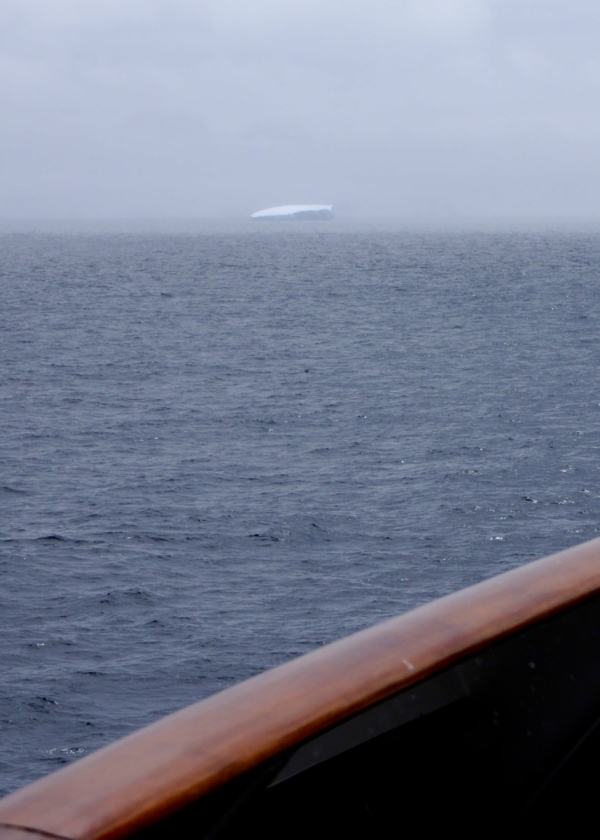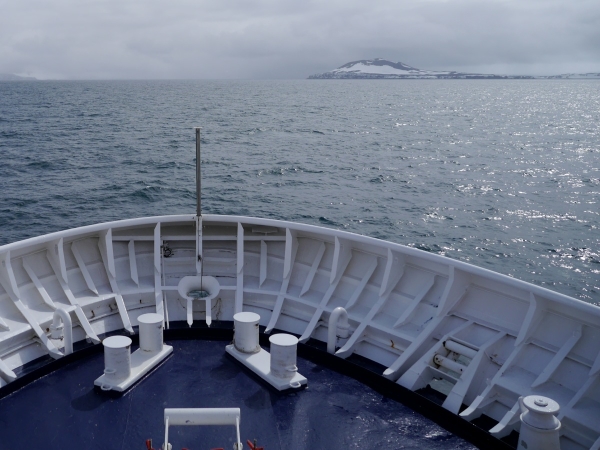![]()
![]() A fortunate consequence of a calmer Drake Passage is that our progress across it was quite speedy. When we woke on the morning of the southern hemisphere’s summer solstice, we had nothing but steel blue seas and seabirds for company.
A fortunate consequence of a calmer Drake Passage is that our progress across it was quite speedy. When we woke on the morning of the southern hemisphere’s summer solstice, we had nothing but steel blue seas and seabirds for company.
But by the early afternoon, we had caught our first glimpse of icebergs, a sign that a big continental ice sheet was in the vicinity. It’s a little mind-blowing to think that these frozen shards contain water that fell as snow somewhere on Antarctica possibly hundreds or even thousands of years ago, and is now being returned to the ocean by breaking off the end of a glacier and eventually melting. A slow-motion water cycle in action.
A little later, we caught our first glimpse of Antarctica itself, as the South Shetland Islands pulled into view. Although as was almost always the case, the visible ‘land’ was just a thin dark rind between the sea below and the massive ice sheet above. There is a lot of ice in Antarctica.

King George Island, largest of the South Shetlands. What you think is the lowest bank of clouds is in fact the top of the ice sheet. Photo: Chris Rowan, 2013.
We were able to take advantage of the longest day of the year to squeeze in our first landing, on Penguin Island.
We’ve already given you the highlights of this landing on a recently active volcano, but we can’t leave Penguin island without giving you some obligatory penguins.
We also encountered a sad reminder that this wilderness has not been untouched by the hand of humanity: our landing beach was strewn with ribs and vertebrae of whales dragged ashore for processing in the late 19th and earlier 20th century.








Nice plan for content warnings on Mastodon and the Fediverse. Now you need a Mastodon/Fediverse button on this blog.